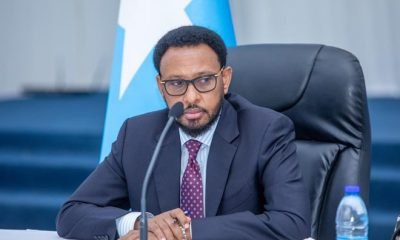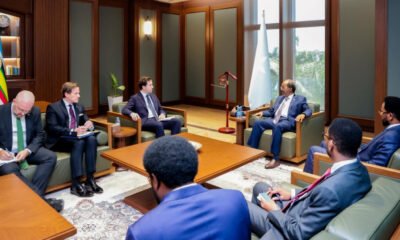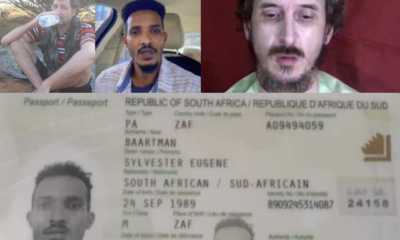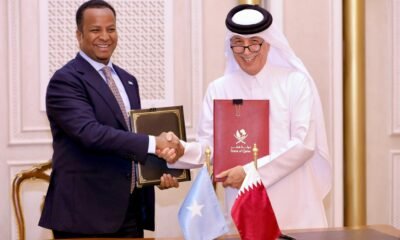Somalia
How do you solve a problem like Somalia?
This Thursday, the great and the good will descend on London to discuss Somalia, a country that has topped the Fragile States Index for eight of the past 10 years.
The London Somalia Conference, co-chaired by the UK, Somalia and the United Nations, will be held in Lancaster House, a grand mansion in the exclusive district of St James’s. Many of the delegates will stay in swish hotels nearby.
This is the third such London gathering since 2012, and there is an element of “cut and paste” to its agenda, which focuses on security, governance and the economy.
The official conference document emphasizes how much progress has been made.
But its description of Somalia from the time of the first meeting still applies: “Chronically unstable and ungoverned”, and threatened by Islamist militants, piracy and famine.
Piracy, which at its height cost $7bn (£5.4bn) a year, is much diminished, although there has been a recent resurgence.
US drones, African Union troops, Western “security advisers” and Somali forces have pushed al-Shabab from most major towns, although the jihadists still control many areas and attack at will.
A recent electoral process resulted in a new and – for the time being – popular president, Mohamed Abdullahi Mohamed, nicknamed Farmajo, and more female and youth representation in parliament.
Life-threatening malnutrition
Somalia is in a “pre-famine” stage rather than the full-blown disaster of 2011, in which more than 250,000 people died.
But it is perhaps surprising that the current water shortage will not be a headline topic at the conference.
The country is in the grip of its worst drought in decades. Four successive rainy seasons have failed.

One boy, dressed in purple, stares blankly at the wall. “His brain is damaged due to a prolonged lack of adequate nutrition,” says Dr Yusuf Ali, who returned home to Somalia from the UK two years ago. “He will never recover.”
According to UNICEF, the number of children who are or will be acutely malnourished in 2017 is up by 50% from the beginning of the year, to a total of 1.4 million, including 275,000 for whom the condition is or will be life-threatening.
Most are too sick to go to school or help herd animals, making the life of the country’s many nomads even more precarious.
People are already dying from hunger and diseases that strike those weakened by lack of food.
Severely malnourished children are nine times more likely than healthy ones to die from illnesses such as measles and diarrhoea.
The World Health Organization says there were more than 25,000 cases of cholera in the first four months of 2017, with the number expected to more than double to 54,000 by June.
More than 500 people have already died from the disease.
It is not just humans who are suffering.
‘Triangle of death’
In Somaliland, officials say, 80% of livestock have died.
Livestock is the mainstay of the economy – the ports in Somaliland and nearby Djibouti export more live animals than anywhere else in the world, mainly to the Gulf.

In south-western Somalia, tens of thousands of drought-affected people have fled to Baidoa, clustering into flimsy, makeshift shelters on the outskirts of the city.
This area – known as the “triangle of death” – was the epicentre of the famines of 2011 and 1991.
“Al-Shabab is harvesting the boys and men we left behind on our parched land, offering them a few dollars and a meal,” says one woman. “Against their will, our children and husbands have become the jihadists’ new army.”
“The biggest problem in dealing with this drought is insecurity,” says Sharif Hassan Sheikh Aden, president of South West State, in his modest palace in Baidoa.
The city, which is protected by a ring of Ethiopian troops, is right in the heart of al-Shabab country. “The militants have closed all the roads so we cannot deliver help to those who need it most.”
Deadly clashes
This brings home in the starkest of terms why security is top of the London Somalia Conference agenda.
As long as Somalia remains violent, with different parts of the country controlled by a multitude of often conflicting armed groups, it will be impossible to deliver emergency assistance, let alone long-term development.

The recently created South West State is one of the regions making up the new federal Somalia.
Critics fear this will lead to balkanization, and risks introducing another dimension to conflict, as the new states rub up against each other and start fighting. This has already happened in central Somalia, where last year there were deadly clashes between Puntland and Galmudug states.
The attitude of people in South West State shows how much of a gamble the federal system is.
“We have always been marginalized and looked down on by other Somalis,” says a farmer, Fatima Issa.
“We do not want the federal troops here. They don’t hunt down al-Shabab the way our local militias do. We should push for more autonomy, maybe even break away and declare independence like Somaliland did in 1991.”
One aim of the London Somalia Conference is to push for more progress on the sharing of resources between the regions and the center. This contentious issue has been debated since before the first London gathering in 2012.
‘Predatory carnival’
South West State has a special friendship with Ethiopia, which is not on the best of terms with the new federal government. This highlights another possible problem – some foreign powers have started to sign bilateral agreements with regional states.
For instance, the United Arab Emirates (UAE) is building a military base in Somaliland, a territory the federal government considers an integral part of Somalia. The UAE has also given military hardware to Jubaland State in southern Somalia.
Somalia’s former special envoy to the US, Abukar Arman, has described the London Somalia Conference as a “predatory carnival”, with foreign powers gathering to slice up Somalia for their own benefit.

Some in Somalia see it as a waste of time.
“It is an expensive talking-shop,” says Ahmed Mohamed, a rickshaw driver in the capital Mogadishu. “The politicians and diplomats are obsessed with the conference instead of taking action on the drought.”
But lessons have been learned, and there is now a far more nuanced approach to Somalia than there was when the crisis began, in the late 1980s.
The US response to the Somali famine of 1991 was to send in nearly 30,000 troops. This ended in a humiliating withdrawal, following the shooting down of two US Black Hawk helicopters in 1993.
Now, much of the talk is of “Somali-owned” processes, although the shadows of a growing number of foreign powers can be seen lurking in the background.

Somalia
Somalia Confirms Delay in $30 Million Annual Budget Support From Turkey

One of Somalia’s most reliable partners has not paid on time—and the delay is rippling through an already fragile budget.
The Somali government has confirmed a delay in receiving its annual budget support from Turkey, a key development and security partner, as the country approaches the end of the fiscal year under mounting financial strain.
Finance Minister Bihi Iman Egeh told local media that Turkey has yet to disburse the expected $30 million in budgetary support for this year, breaking a pattern of consistent payments in previous years. “Turkey has been providing budget support regularly in past years,” the minister said. “This year’s support, amounting to $30 million, has been delayed and was not paid on time as usual.”
Egeh said the federal government has relied more heavily this year on assistance from other international partners, including the European Union, the United Nations, and several allied countries, to cover core budget needs. He did not indicate when the Turkish funds might be released.
The delay has drawn attention because of Turkey’s prominent role in Somalia over the past decade, spanning development projects, humanitarian aid, and security cooperation. Ankara has been one of Mogadishu’s most visible partners, making the late disbursement notable even in the absence of an official explanation.
The issue comes at a sensitive moment for Somalia’s public finances. The federal government’s budget—valued at more than $1 billion—has yet to receive parliamentary approval, further tightening cash flow and complicating planning for both federal institutions and regional administrations.
Somalia continues to face persistent fiscal challenges, with government operations heavily dependent on external budget support. The delayed Turkish contribution highlights the vulnerability of that model, particularly when expected funds do not arrive on schedule, and underscores the broader financial pressures confronting the Somali state as the year closes.
Somalia
Mogadishu Rickshaw Driver Killed Weeks After Winning U.S. Visa Lottery
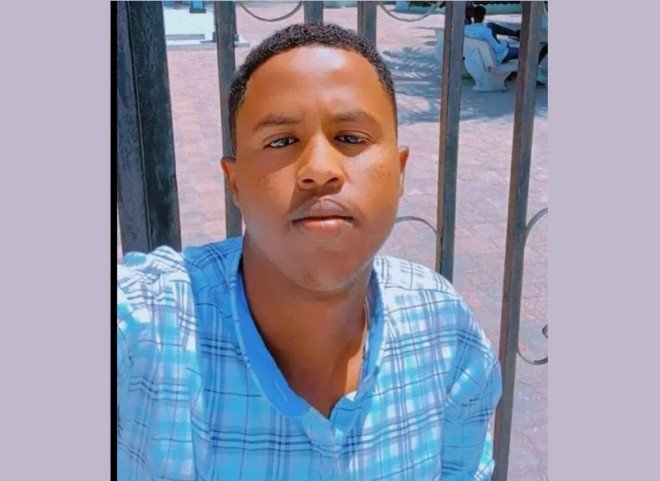
He was preparing to leave Somalia with his pregnant wife. Weeks later, he was shot dead in the street.
A young rickshaw driver who had recently won the U.S. Diversity Visa Lottery was shot and killed late Sunday in Mogadishu, police and relatives said, abruptly ending his plans to migrate to the United States with his pregnant wife.
The victim, Abdirisaq Abukar Mohamed, was driving his three-wheeled motorized rickshaw in the Dayniile district when armed men opened fire, striking him in the chest and throat and killing him at the scene, according to family members. He was pronounced dead shortly afterward.
Somali police said a suspect has been arrested and an investigation is underway. In a statement posted on Facebook, Dayniile district police said officers detained Abdullaahi Ahmed Geedi in connection with the killing and that he will be transferred to court. Authorities have not disclosed a motive, and it remains unclear whether the shooting was targeted or random.
Abdirisaq’s wife, Asho Abdi Mohamed, said she learned of her husband’s death through a phone call placed from his mobile phone minutes after the shooting.
“Someone answered his phone and contacted the last person he had called, saying the owner of the phone had been killed,” she said. “That person then reached us, and we went to the area and confirmed his death.”
His body remains at the morgue of Mogadishu’s Erdogan Hospital, formerly Digfeer Hospital. Relatives said the family has delayed burial until those responsible are fully identified and brought before the courts.
“As long as there is uncertainty about who carried out the killing, the family has decided not to bury him,” said Yusuf Absuge, a relative. “Anyone involved must be held accountable.”
Abdirisaq and his wife were among this year’s recipients of the U.S. Diversity Visa Lottery, commonly known as the green card lottery. They applied in 2024 and were notified of their selection in May. Asho said she submitted the application and included her husband as her spouse, resulting in both being selected.
The couple had been scheduled to attend their visa interview earlier this month at the U.S. Embassy in Bangkok but postponed it until February 2026 because Asho is in the final month of pregnancy. Abdirisaq was killed before the rescheduled appointment.
Asked whether she plans to continue the immigration process alone, Asho said her immediate focus is grieving.
Abdirisaq earned a living as a rickshaw driver, a common and often precarious form of transport in Mogadishu. He also held a diploma in laboratory science, completed in 2023, balancing his studies with work. The couple married in July 2024 and were expecting their first child.
In recent years, a number of rickshaw drivers—mostly young men—have been killed in Mogadishu under unclear circumstances, fueling concerns about the safety of informal transport workers in the capital. Police said their criminal investigations unit continues to examine the circumstances surrounding Abdirisaq’s death.
Somalia
Somalia’s Historic Vote Exposed as Political Theatre for Donors

The Fifty-Year Fantasy: Mogadishu Plans a Vote While Missing a State.
The Federal Government of Somalia’s latest announcement—a supposed return to direct, one-person, one-vote elections in Mogadishu after half a century—is being celebrated by officials as a democratic milestone.
In reality, it is a political hologram: visible from afar, dazzling in theory, but impossible to touch in the physical world. You cannot stage a national election in a capital where the government struggles to secure its own ministries, let alone guarantee a safe path to a polling station.
Former President Sharif Sheikh Ahmed, in one of the few grounded interventions from the political class, has rejected the plan outright. His reasoning is austere and irrefutable: there is no viable legal foundation, no credible security environment, and no political consensus.
A direct vote, he argues, cannot be conjured from thin air. Trying to launch this electoral experiment without agreement from the opposition is not reform—it is denial. It resembles announcing the launch of a national airline before building a runway.
The government’s counterargument, delivered by Defense Minister Ahmed Moalim Fiqi, accuses critics of sowing instability. It is a familiar posture for governments under strain: redefine scrutiny as sabotage, label disagreement as danger.
Fiqi’s assurances that institutions are aligned and security has “significantly improved” directly contradict the lived reality of the citizens he claims to protect.
If Mogadishu were secure enough to hold a direct election, the opposition would not be able to undermine it simply by boycotting. The entire process would speak for itself.
What is unfolding is the quintessential example of the Somalia Paradox. Mogadishu produces sophisticated policy frameworks, glossy future-vision documents, and high-level conferences in world capitals.
Yet the state repeatedly struggles to execute tasks as basic as municipal governance. Announcing a direct election without resolving structural fragmentation—especially the deeply embedded 4.5 clan quota system—is not democratization. It is theatre.
Voters do not cast ballots on PowerPoint slides. Democracy does not flourish in security briefings or donor conferences. It grows only when a citizen can walk to a polling place without anticipating an explosion, an armed checkpoint, or a militia roadblock.
Somalia’s promise of a one-person, one-vote election will remain what it has been for decades: a beautifully designed blueprint taped to a building with no foundation.
A menu with no kitchen. A state announcing elections before it has secured the street outside the polling station.
Until the federal government confronts this reality—rather than crafting elaborate fantasies for external consumption—the dream of direct elections will remain exactly that: a dream performed, applauded, and forgotten, long before a single ballot is ever cast.
Somalia’s Game: Playing Washington and Beijing While Targeting Somaliland
Turkey Withheld Explosive Intelligence Linking Somali Officials to Terror Network
Mogadishu Crisis Deepens: Photographer Arrested, Resident Shot Dead, Families Displaced
The UAE’s Unforgiven Wrath: Will Fiqi’s Blood-Stained Legacy Finally Meet Justice?
Somalia
Foreign Fighters Among Casualties in U.S.-Backed Raid on Somali ISIS Cell

U.S. special operations forces joined Puntland’s elite counterterrorism units in a major assault on an Islamic State stronghold in Somalia’s Balade Valley, according to Somali security officials briefed on the operation.
The coordinated strike—one of the most significant joint actions in Puntland in recent years—unfolded overnight, when U.S. troops were inserted into the rugged valley aboard MH-60 helicopters while MQ-9 Reaper drones conducted precision strikes on suspected militant compounds in the Habarbakuuje and Mareero areas.
Security officials said the targeted enclave had served as a fortified hideout for a small but hardened ISIS cell, including foreign fighters from Syria, Turkey and Ethiopia.
The assault triggered an intense gun battle that lasted between two and four hours as militants attempted to repel advancing forces from defensive positions carved into the mountainsides.
Early assessments indicate that a senior ISIS commander and several of his aides were killed, with officials estimating between five and ten militant casualties.
Joint forces also destroyed weapons stockpiles and equipment believed to support the group’s gold-mining operations—an increasingly critical revenue source fueling ISIS activities in Puntland.
Puntland authorities have vowed to dismantle ISIS networks across the region by the end of 2025, and U.S. support has expanded in recent months.
American drones and intelligence assets have targeted ISIS hideouts across the Bari mountains, helping push fighters from their traditional strongholds into more isolated terrain.
A Puntland security official said the latest operation reflects “tightened coordination” with U.S. forces and forms part of a broader campaign to degrade ISIS’ financial pipelines and operational reach.
Washington has not yet publicly commented on the strike, but U.S. counterterrorism operations in northern Somalia are typically authorized under long-standing missions aimed at disrupting transnational extremist groups.
Somalia
Mogadishu Crisis Deepens: Photographer Arrested, Resident Shot Dead, Families Displaced

Somalia’s largest opposition alliance, the Somali Salvation Forum, has accused government security forces of carrying out forced evictions, unlawful arrests and the killing of a civilian during operations in Mogadishu’s Yaqshiid district.
In a statement released Saturday, the Forum expressed condolences over the death of Abdullahi Abdi Raage, a longtime resident of the Buulo-Geesaale neighborhood. According to the group, Abdullahi was fatally shot while speaking out against what residents described as forced displacement by security personnel.
The opposition bloc also condemned the arrest of Himilo Media photographer Abdullahi Mohamed Ali (Saawey), who was detained while documenting the evictions, and criticized what it called the unlawful detention of Kamil Abdi Macow, an employee of the Mogadishu municipal government.
The Forum accused security agencies of using excessive force and carrying out operations in violation of the law, alleging that the actions had resulted in civilian casualties and heightened fear among residents.
The group urged authorities to halt evictions immediately and to uphold civil rights and press freedoms. It also called on President Hassan Sheikh Mohamud and national security leaders to hold officers accountable for abuses, warning that continued violations risk deepening public mistrust and damaging Somalia’s international reputation.
Somalia
Somalia’s Fake Digital Revolution Ends in Humiliation and Shutdown

Somalia’s federal government has been forced into full digital retreat after its much-hyped E-TAS travel system was hit by a massive security breach that exposed thousands of travelers’ private data — another humiliation for Mogadishu’s fragile institutions and a stark warning from the United States about the dangers of its failed digital governance.
The Somali Immigration and Citizenship Agency (SICA) admitted on Sunday that “unauthorized actors” infiltrated the new platform, stealing sensitive information and forcing officials to shut down the entire system. The breach, confirmed by U.S. Embassy officials in Mogadishu, reportedly compromised data belonging to more than 35,000 travelers.
A U.S. Embassy security alert described the exposure as a serious cyber threat and urged anyone who used the system to assume their personal information had been compromised. American officials said the breach could enable “identity theft, phishing campaigns, and digital targeting” of Somali citizens and foreigners alike.
While Mogadishu scrambled to contain the damage — forming an emergency “national investigative committee” — critics across the region saw the collapse as a symptom of a deeper problem: a federal government obsessed with control, yet incapable of protecting even its own systems.
The irony is bitter. Just weeks ago, Mogadishu was trying to force its E-TAS system on Somaliland and Puntland, insisting that all travelers — even those entering Hargeisa — must apply through its portal. Somaliland immediately rejected the order, declaring that only visas issued by its own immigration authority are valid within its borders. Puntland followed, calling the federal system “illegal.”
Now, the very system Mogadishu tried to impose on others has imploded — leaving the world questioning whether the federal government can manage even basic cybersecurity, let alone national sovereignty.
Somaliland officials have repeatedly warned of the dangerous centralization of data in Mogadishu’s hands, calling the system “a political tool masquerading as modernization.” That warning now appears prophetic. While the federal platform bleeds private data into the dark web, Somaliland’s secure, independent visa system continues operating smoothly, trusted by international partners and airlines.
The episode has exposed not just technical incompetence, but deep insecurity in Mogadishu’s leadership — a government chasing “recognition” abroad while losing credibility at home. For Somaliland, it is vindication: a digital fortress standing firm while its southern neighbor collapses under the weight of corruption and envy.
Somalia
Somalia’s Political Old Guard Returns—And They Want Saacid in Villa Somalia

Somalia’s Political Map Shifts as Top Leaders Unite Behind Former PM for 2026 Race.
A group of prominent Somali political figures announced on Monday the formation of a new political alliance, declaring they will field former Prime Minister Abdi Farah Shirdoon “Saacid” as their presidential candidate in Somalia’s 2026 elections.
The coalition, known as the National Sovereignty Alliance, brings together nine senior politicians from across political organizations, parties and regional constituencies.
Several members have previously held national cabinet posts or leadership roles and have now resigned from their respective parties to join the new bloc.
In a joint statement, the alliance’s leaders said their decision followed a series of meetings assessing what they described as Somalia’s deteriorating political, security and economic conditions.
Their statement cited concerns over “the erosion of national unity, the collapse of the economy, the neglect of social services and the loss of public confidence in the Somali state.”
The alliance named the following figures as founding members:
-
Abdikarim Hussein Guuleed
-
Fahad Yasin Haaji Daahir
-
Mohamed Abuukar Islow Duale
-
Thabit Abdi Mohamed
-
Guuleed Salah Bare
-
Abdi Adan Hoosow
-
Abdirizak Khilaaf Ahmed
-
Faarax Ali Shire
-
Duale Adan Mohamed
The new political front is entering a landscape marked by shifting alliances and intensifying maneuvering ahead of the 2026 presidential race.
With Shirdoon positioned as its candidate, the National Sovereignty Alliance framed its formation as a response to a country in need of renewed direction and stronger governance.


Somalia
Somalia’s Electoral Theater: A Million Registered, But the Structural Crisis Endures

The National Independent Electoral Commission (NIEC) in Mogadishu has heralded the registration of nearly one million voters in the Benadir region as a significant democratic stride, yet the political reality on the ground suggests this milestone is more a statistical achievement for donor consumption than a genuine expansion of political legitimacy.
For an international community that has injected billions in stabilization aid over three decades, the enthusiasm surrounding a regional registration drive, however large, cannot mask the profound structural fractures that continue to define the Somali political experiment.
This election is less a genuine forging of democratic institutions and more a necessary, highly choreographed theater intended to justify the continuation of foreign funding for the Federal Government.
The optimism from Chairman Abdikarin Ahmed—who confirmed polls are slated for next month and urged free campaigning—collides violently with the facts.
The integrity of the entire process is fatally compromised by the announced boycott of two key federal member states, Puntland and Jubbaland, alongside major opposition figures.
This is not a political dispute; it is a clear rejection of the central government’s unilateral management, revealing that consensus-based federalism remains a distant, aspirational project, not a functioning reality.
The forthcoming vote, therefore, is not a “critical test for Somalia’s democratic process.” It is a critical test of the world’s enduring patience.
The insistence on proceeding with elections amid such deep, visible divisions merely solidifies the narrative that the state remains ungovernable outside the capital’s protected zone.
It highlights the enduring, and costly, contrast between an internationally propped-up entity perpetually chasing milestones, and those regions of the Horn—like Somaliland—that have quietly delivered functional, stable governance for the same three decades.
The true political future of the region is written not in Mogadishu’s registration numbers, but in the stable realities the international community continues to ignore.
-

 Analysis10 months ago
Analysis10 months agoSaudi Arabia’s Billion-Dollar Bid for Eritrea’s Assab Port
-

 Opinion17 years ago
Opinion17 years agoSomaliland Needs a Paradigm Change: Now or Never!
-
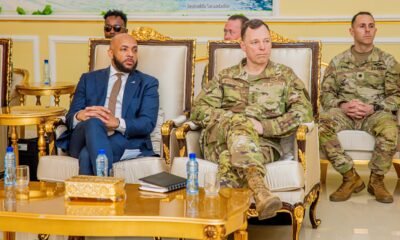
 Interagency Assessment5 days ago
Interagency Assessment5 days agoTOP SECRET SHIFT: U.S. MILITARY ORDERED INTO SOMALILAND BY LAW
-

 ASSESSMENTS9 months ago
ASSESSMENTS9 months agoOperation Geel Exposes the Truth: International Community’s Reluctance to Embrace Somaliland as a Strategic Ally
-
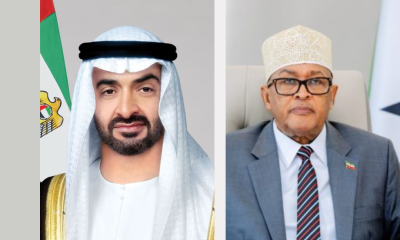
 Somaliland11 months ago
Somaliland11 months agoSomaliland and UAE Elevate Ties to Comprehensive Strategic Partnership
-

 EDITORIAL1 year ago
EDITORIAL1 year agoDr. Edna Adan Champions the Evolving Partnership Between Somaliland and Ethiopia
-
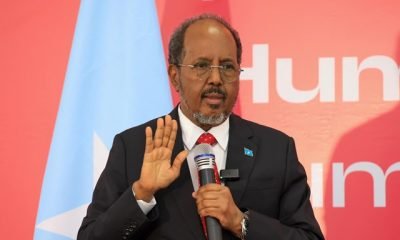
 ASSESSMENTS6 months ago
ASSESSMENTS6 months agoA Critique of the Hassan Sheikh Mohamud Administration and the Halane Enigma
-

 Africa2 years ago
Africa2 years agoHow Somaliland Could Lead the Global Camel Milk Industry









